If you are satisfied with regular business meetings and great fish fries, then this is NOT the Masonic book for you.
This classic Masonic esoteric work is designed for the student seeking far deeper meanings in Masonry. In the words of the author:
Although the book is primarily intended for the instruction of members of the Co-Masonic Order, whose desire, as is expressed in their ritual, is to pour the waters of esoteric knowledge into the Masonic vessels, I hope nevertheless that it may appeal to a wider circle, and may perhaps be of use to some of those many Brn. in the masculine Craft who are seeking for a deeper interpretation of Masonic symbolism than is given in the majority of their Lodges.
Author’s Preface
THE Masonic fellowship differs from all other societies in that candidates for membership have to join it blindfold, and cannot receive much information about it until they actually enter its ranks.
Even then the majority of Masons usually obtain only the most general idea of the meaning of its ceremonies, and seldom penetrate further than an elementary moral interpretation of its principal symbols.
In this book it is my object, while preserving due secrecy upon those matters which must be kept secret, to explain something of the deeper meaning and purpose of Freemasonry, in the hope of arousing among the Brn. a more profound reverence for that of which they are the custodians and a fuller understanding of the mysteries of the Craft.
Although the book is primarily intended for the instruction of members of the Co- Masonic Order, whose desire, as is expressed in their ritual, is to pour the waters of esoteric knowledge into the Masonic vessels, I hope nevertheless that it may appeal to a wider circle, and may perhaps be of use to some of those many Brn. in the masculine Craft who are seeking for a deeper interpretation of Masonic symbolism than is given in the majority of their Lodges, showing them that in the ritual which they know and love so well are enshrined splendid ideals and deep spiritual teachings which are of the most absorbing interest to the student of the inner side of life.
Before we can gain this fuller understanding we must have at least some slight acquaintance with certain facts concerning the world in which we live – a world only half of which we see or understand.
Indeed, undignified as the statement sounds, it is quite true that our position resembles very closely that of a caterpillar feeding upon a leaf, whose vision and perception extend but very little beyond the leaf upon which he crawls.
How difficult it would be for such a caterpillar to transcend his limitations, to take a wider view, to understand that his leaf is part of a huge tree with millions of such leaves, a tree with a life of its own – a life outlasting a thousand generations of lives such as his; and that tree in turn only a unit in a vast forest of dimensions incalculable to his tiny brain!
And if by some unusual development one caterpillar did catch a glimpse of the great world around him and tried to explain his vision to his fellows, how those other caterpillars would disbelieve and ridicule him, how they would adjure him to waste no time on such unprofitable imaginings, but to realize that the one purpose of life is to find a good position on succulent leaf, and to assimilate as much of it as he can!
When later on he becomes a butterfly, his view widens, and he comes into touch with a beauty, a glory and a poetry in life of which he had no conception before.
It is the same world, and yet so different, merely because he can see more of it, and move about in it in a new way.
Every caterpillar is a potential butterfly; and we have the advantage over these creatures in that we can anticipate the butterfly stage, and so learn much more about our world, come much nearer to the truth, enjoy life much more, and do much more good.
We should study the hidden side of every-day life, for in that way we shall get so much more out of it. The same truth applies to higher things – to religion, for example. Religion has always spoken to mankind of unseen things above – not only far away in the future, but close around us here and now.
Our life and what we can make of it largely depend upon how real these unseen things are to us.
Whatever we do, we should think always of the unseen consequences of our action. Some of us know how useful that knowledge has been to us in our Church Services; and it is just the same in Freemasonry.
Though this vast inner world is unseen by most of us, it is not therefore invisible. As I wrote in The Science of the Sacraments:
There are within man faculties of the soul which, if developed, will enable him to perceive this inner world, so that it will become possible for him to explore and to study it precisely as man has explored and studied that part of the world which is within the reach of all.
These faculties are the heritage of the whole human race; they will unfold within every one of us as our evolution progresses; but men who are willing to devote themselves to the effort map gain them in advance of the rest, just as a blacksmith’s apprentice, specializing in the use of certain muscles, may attain (so far as they are concerned) a development much greater than that of other youths of his age.
There are men who have these powers in working order, and are able by their use to obtain a vast amount of most interesting information about the world which most of us as yet cannot see. . . .
Let it be clearly understood that there is nothing fanciful or unnatural about such sight. It is simply an extension of faculties with which we are all familiar, and to develop it is to make oneself sensitive to vibrations more rapid than those to which our physical senses are normally trained to respond.
(*Op. cit, pp. 9, 10.)
It is by the use of those perfectly natural but super-normal faculties that much of the information given in this book has been obtained.
Anyone who, having developed such sight, watches a Masonic ceremony, will see that a very great deal more is being done than is expressed in the mere words of the ritual, beautiful and dignified as they often are.
Of course, I fully understand that all this may well seem fantastically impossible to those who have not studied the subject at first-hand; I can but affirm that this is a clear and definite reality to me, and that by long and careful research, extending over more than forty years, I am absolutely certain of the existence and reliability of this method of investigation.
It is no new discovery, for it was known to the wise men of old; but, like so much else of the ancient wisdom, it has been forgotten during the darkness of the early Middle Ages, and its value is only gradually being rediscovered; so to many it appears unfamiliar and incredible.
We have only to remember how utterly inconceivable the wireless telegraph, the telephone, the aeroplane or even the automobile would have seemed to our great grandfathers, in order to realize that we should be foolish to reject an idea merely because we have never heard of it before.
Only a few years ago the powers of research put at our disposal by the invention and development of the spectroscope were as far beyond popular thought as those of clairvoyance are now.
That by it we could discover the chemical constitution and measure the movements of stars thousands of millions of miles away might well have been regarded as the baseless fabric of a dream. May not other discoveries be impending?
Men of high scientific attainments, such as Sir Oliver Lodge, Sir William Crookes, Professor Lombroso, M. Camille Flammarion and the late Professor Myers, who have taken the trouble to inquire into this matter of inner sight, have convinced themselves that this faculty exists; so if there be those among the Brn. to whom this claim seems ridiculous, I would ask them notwithstanding to read on and see whether the knowledge obtained by a means which is strange to them does not nevertheless supply for obscure or incomprehensible points in our ritual an explanation which commends itself to their reason and common sense.
That which gives them a better grasp of the meaning underlying the mysteries of our Craft, and thereby increases their veneration and love for it, cannot be unworthy or absurd.
Any student who wishes to know more of this fascinating subject may be referred to a little book entitled Clairvoyance, which I wrote some years ago.
I should like strongly to recommend for the perusal of my Brn. of the Craft two books by Wor. Bro. W. L. Wilmhurst – The Meaning of Masonry and The Masonic Initiation; I have myself read them with great delight and profit, and have gathered many gems from their pages.
[Note: While this paragraph is missing in First Edition, in Second Edition it is indicated as part of First Edition.]
I desire to offer my heartiest thanks to the Rev. Herbrand Williams, M.C., B.A., for his kindness in placing at my disposal his vast stores of Masonic erudition, and for many arduous months of patient and painstaking research; also to the Rev. E. Warner and Mrs. M. R. St. John for the careful drawing of the illustrations, and to Professor Ernest Wood for his untiring assistance and cooperation in every department of the work, without which the production of the book would not have been possible.
C. W. L.
Excerpt from Chapter 1 -Introductory – Personal Experience
THE origins of Freemasonry are lost in the mists of antiquity.
Last century there were many who thought that it could be traced no further back than the mediaeval guilds of operative masons, though some regarded these in turn as relics of the Roman Collegia.
There may still be some who know no better than that, but all students of the Ancient Mysteries who are also Freemasons are aware that it is along that line that we find our true philosophical ancestry; for there is much in our ceremonies and teachings which could have had no significance for the mere operative mason, though when examined by the light of the knowledge received in the Mysteries it is seen to be pregnant with meaning.
Many Masonic writers claim various degrees of antiquity for the Craft, some assigning its foundation to King Solomon, and one at least boldly stating that its wisdom is all that now remains of the divine knowledge which Adam possessed before his fall.
There is, however, plenty of evidence less mythical than that, and to that evidence I happen to be able to contribute a fragment of personal experience of a rather unusual kind.
By devoting some years to the effort and many more years to practice, I have been able to develop certain psychic faculties of the kind mentioned in the Foreword, which, among other things, enable me to remember the previous existences through which I have passed.
The idea of pre-existence may be new to some of my readers.* (*Those who wish to learn more about this most fascinating subject should read Reincarnation, by the V Ills Bro .-.A. Besant, and the chapter on Reincarnation in my Textbook of Theosophy.)
I do not propose now to advance arguments in its favour, though they exist in abundance, but simply to state that for me, as for many others, it is a fact of personal experience.
The only one of those previous lives of mine with which we are here concerned was lived some four thousand years before Christ in the country which we now call Egypt.
When I was initiated into Freemasonry in this life, my first sight of the Lodge was a great and pleasant surprise, for I found that I was perfectly familiar with all its arrangements, and that they were identical with those which I had known six thousand years ago in the Mysteries of Egypt.
I am quite aware that this is a startling statement; I can only say that it is literally true.
No mistake is possible; coincidence will not serve as an explanation. The placing of the three chief officers is unusual; the symbols are significant and distinctive, and their combination is peculiar; yet they all belonged to ancient Egypt, and I knew them well there.
Almost all the ceremonies are unchanged; there are only a few differences in minor points. The s . . . ps taken, the k … s given – all have a symbolical meaning which I distinctly remember.

Charles Webster Leadbeater
IMAGE LINKED: wikimedia Attribution 4.0 International (CC BY 4.0)
Charles Webster Leadbeater (16 February 1854 – 1 March 1934) was a member of the Theosophical Society, author on occult subjects and co-initiator with J. I. Wedgwood of the Liberal Catholic Church.
Originally a priest of the Church of England, his interest in spiritualism caused him to end his affiliation with Anglicanism in favour of the Theosophical Society, where he became an associate of Annie Besant. He became a high-ranking officer of the Society and remained one of its leading members until his death in 1934; writing over 60 books and pamphlets and maintaining regular speaking engagements.

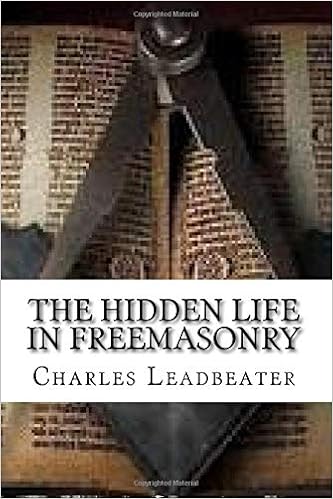
The Hidden Life in Freemasonry
By: Charles Leadbeater
It is once more my privilege to usher into the world, for the helping of the thoughtful, another volume of the series on the hidden side of things written by Bishop Charles W. Leadbeater.
True Mason that he is, he is ever trying to spread the Light which he has received, so that it may chase away the darkness of Chaos.
To look for the Light, to see the Light, to follow the Light, were duties familiar to all Egyptian Masons, though the darkness in that Ancient Land never approached the density which shrouds the West today. This book will be welcomed by all Freemasons who feel the beauty of their ancient Rite, and desire to add knowledge to their zeal.
The inner History of Masonry is left aside for the present, and the apprentice is led by a trustworthy guide through the labyrinth which protects the central Shrine from careless and idle inquirers.
Places that were obscure become illuminated; dark allusions are changed to crystal clarity; walls which seem solid melt away; confidence replaces doubt; glimpses of the goal are caught through rifts in the clouds; and the earth-born mists vanish before the rays of the rising sun.
Instead of fragments of half-understood traditions, confused and uninterpreted, we find in our hands a splendid science and a reservoir of power which we can use for the uplifting of the world.
We no longer ask: “What is the Great Work? We see “that it is nothing less than a concerted effort to carry out the duty that is laid upon us, as those who possess the Light, to spread that Light abroad through the World, and actually to become fellow-labourers with T.G.A.O.T.U. in His great Plan for the evolution of our Brn”.
The detailed explanations of the ceremonies are profoundly interesting and illuminative, and I commend them very heartily to all true Freemasons.
Our V .·.·. I .·.·. Brother has added a heavy debt of gratitude by this book to the many we already owe him. Let us be honest debtors.
ANNIE BESANT December 25, 1925
Recent Articles: in this series
 Book Intro: The Secret Doctrine Explore the profound synthesis of science, religion, and philosophy in H.P. Blavatsky's "The Secret Doctrine." Discover the true depth of Theosophy beyond the oversimplified term "Esoteric Buddhism" and uncover the universal wisdom that transcends religious boundaries. A compelling introduction to Theosophical literature and its broader, esoteric truths. |
 Book Intro - The craftsman and freemason's guide Dive into the enigmatic world of Freemasonry with Cornelius Moore's comprehensive guide. Uncover the symbolic rituals, trace the fraternity's historical roots, and gain a deeper understanding of this age-old society. Perfect for Freemasons and curious readers alike. Unlock the secrets of Freemasonry today! |
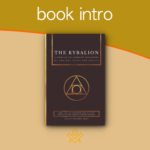 Unravel the secrets of the ancient Egyptian wisdom with our comprehensive guide to the Kybalion, by Three Initiates. Discover its influence on modern thought, the controversies surrounding it, and its seven profound Hermetic principles. Unlock the power of these timeless teachings to transform your understanding of life's mysteries. |
 Book Intro - The Working Tools of an Old York Master by Wilmshurst Unlock the Secrets of Freemasonry! Dive into the profound symbolism of 'The Working Tools of an Old York Master.' Discover the hidden meanings behind the square, compass, plumb line, and more. Embark on a transformative journey of personal growth and spiritual enlightenment. Uncover the ancient wisdom that has shaped generations of Masons. |
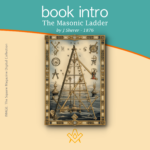 Book Intro - The Masonic Ladder by J Sherer Unlock the mysteries of Freemasonry with "The Masonic Ladder" by J. Sherer - - 1876. This 19th-century guidebook takes readers on a journey through the steps of the Masonic ladder, from the basic principles of the Entered Apprentice to the highest degree of the Sovereign Grand Inspector General. Discover the symbolism, allegory, and values of Freemasonry in this timeless classic. |
 Book Intro - The London mason in the seventeenth century The London Mason in the Seventeenth Century by Douglas Knoop offers a comprehensive examination of the lives and work of masons in the bustling city of London during the seventeenth century. The book delves into the intricacies of their craft, the socioeconomic and political forces that influenced their profession, and the role they played in shaping the architectural landscape of London. |
 Book Intro - History of Freemasonry, Gould, Robert Freke The History of Freemasonry is a comprehensive overview of the origins, development, and evolution of Freemasonry from its ancient roots to the modern era. The book explores the fascinating history of one of the oldest and most mysterious organisations in the world, which has been the subject of much speculation and curiosity over the centuries. - by Robert Freke Gould |
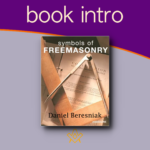 Book Intro - Daniel Beresniak Symbols Of Freemasonry This book is a collection of the symbolic images which Freemasons encounter on their journeys of transformation.' The texts and illustrations form an intimate dialogue whose subject is Freemasonry, and which casts light on the relationship between dreams and reality, reason, intuition and imagination. |
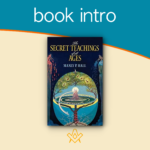 Book Intro - The Secret Teachings of All Ages by Manly P Hall The Secret Teachings of All Ages by Manly P Hall is a comprehensive and in-depth exploration of the various esoteric and occult traditions that have shaped human history. The book covers a wide range of subjects including alchemy, astrology, mysticism, and secret societies, and provides detailed explanations of the underlying principles and concepts. |
 Book Intro - Duncan's Masonic Ritual and Monitor Duncan's Masonic Ritual and Monitor is an impression of the Old York Rite published in New York in 1866. |
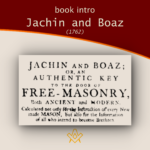 Book Intro - Jachin and Boaz (1762) Thirty two years after Samuel Prichard's Masonry Dissected (1730) a second detailed exposure was published Jachin and Boaz (1762) attributed to the same author, and met with equal distain by Freemasons of the time. However, these exposures offer the masonic historian an invaluable view in to how freemasonry was conducted during its early formation |
 Book Intro - Three Distinct Knocks (c.1760) Giving an exact account of all their proceedings in making a brother, with the three obligations or oaths belonging to the first second, and third degrees of masonry, viz. The entered apprentice, fellow-craft, and master-mason: with the obligating on belonging to the chair, and the grip and word. |
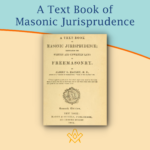 Book Intro - A Text Book of Masonic Jurisprudence An introduction to Albert Mackey's seminal work on Masonic Jurisprudence – the theory or philosophy of Masonic law. The Foundations of Masonic Law are to be found in the Landmarks, or Unwritten Law, and in the Ancient Constitutions, or the Written Law. These constitute the subject matter of the book. |
 Book Intro - The Perfect Ceremonies Of Craft Masonry 1871 A beautiful example of a the rituals, produced in a Medieval illuminated script style. Facsimiles still exist of this illustrated ritual book, of which the most authentically produced version is that available from the Scottish Rite Masonic Book Club. |
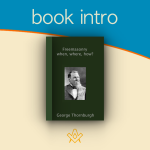 Book Intro – Freemasonry; when, where, how? Introduction to Freemasonry; when, where, how? By George Thornburgh |
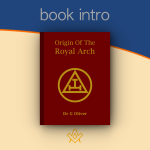 Book Intro - Origin Of The Royal Arch An introduction to the Origin of the Royal Arch, through the eyes of the English nineteenth century masonic author Dr G Oliver (1782–1867) |
 Book Intro – Symbolical Masonry Symbolical Masonry is a treasure-house of Masonic lore, including discussions of key concepts of the first three degrees, along with an extensive study guide. |
 This month we look at – 'A portrait gallery, with biographical sketches of prominent freemasons throughout the United States' |
 Extracted and abridged from The Mystic Tie: Or, Facts and Opinions, Illustrative of the Character and Tendency of Freemasonry By Albert Mackey, |
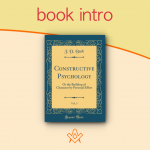 Book intro - Constructive Psychology The introduction to Constructive Psychology or The Building Of Character By Personal Effort by J D Buck a masonic author |
 book intro - Cagliostro: the splendour and misery of a master of magic Preface to the book by William Rutherford Hayes; Cagliostro: the splendour and misery of a master of magic |
 book intro - Origin of the Rosicrucians and the Free-Masons Historico-Critical Inquiry into the Origin of the Rosicrucians and the Free-Masons – Thomas De Quincey |
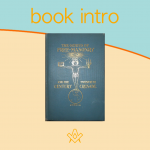 Book Intro - The Genius of Freemasonry The Genius of Freemasonry: “Has any brother anything to offer for the good of Masonry?” The following pages are the author’s answer to that question. |
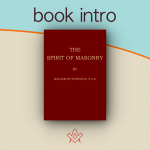 Book Intro - The Spirit of Masonry An essential source for anyone interested in exploring the inner mysteries of the Masonic Fraternity. |
 Book intro - History of Freemasonry Introduction to a classic masonic book by J. G. Findel, History of Freemasonry published 1866 |
 The Book of Constitutions for the Ancient Grand Lodge or Ahiman Rezon |
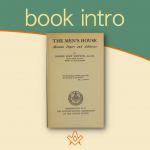 A short introduction to The Men's House, a collection of masonic papers and addresses |
 This is a general survey of Masonic origins, history and philosophy. It was at one time given to every new Mason in Iowa. |
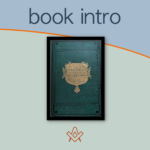 Book Intro - The Discrepancies of Freemasonry Written almost 150 years ago, this book contains wisdom still relevant today. |
 Book Intro - The Principles of Masonic Law "The first great duty, not only of every lodge, but of every Mason, is to see that the landmarks of the Order shall never be impaired". |
 Published in 1911, this fascinating book is equally relevant for the 21st century Mason with an interest in the more mystical side of Freemasonry. |
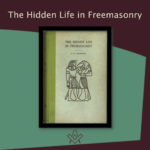 Book Intro - Hidden Life of Freemasonry Introduction to The Hidden Life in Freemasonry (1926) by Charles Webster Leadbeater |
 Book Intro - The Symbolism of Freemasonry Introduction to a classic masonic book; The Symbolism of Freemasonry: Illustrating and Explaining Its Science and Philosophy, its Legends, Myths and Symbols. |
 Book Intro - The Meaning of Masonry This is the Introduction to The Meaning of Masonry, a set of essays which discuss the esoteric side of Masonry |
 Book Intro - Illustrations of Masonry Introduction to Illustrations Of Masonry by William Preston (1742-1818) |
masonic knowledge
to be a better citizen of the world
share the square with two brothers

click image to open email app on mobile device










